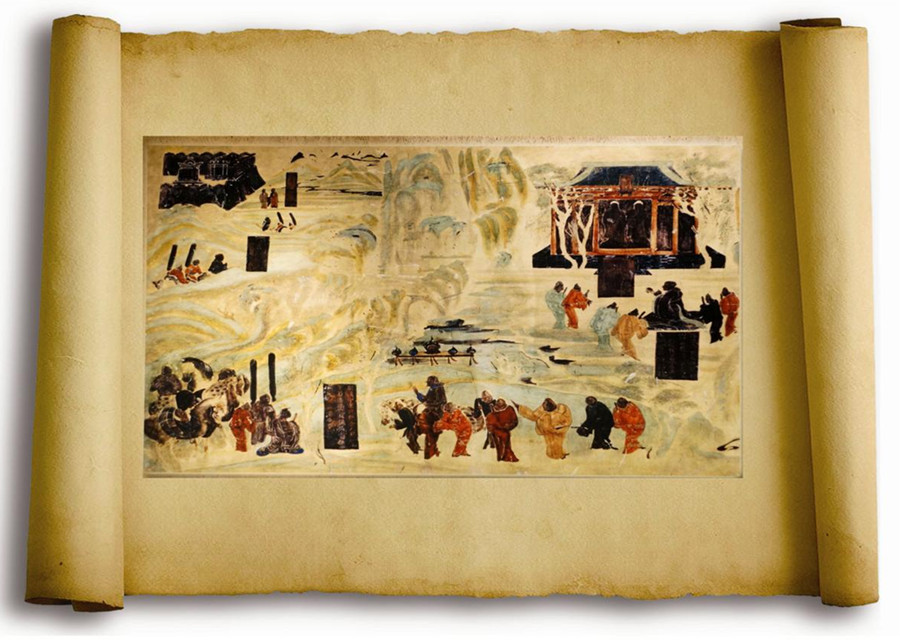







 |
|
A photo of the 8th century painting, The travel of Zhang Qian to the west, from Mogao caves in Gansu province. Zhang,a diplomat during the Han dynasty (206 BC to AD 220), set out from the capital city of Chang’an (present day Xi’an) and established the first commercial land route between East and West. [Photo/IC] |
On a practical level, merchants had to learn the languages and customs of the countries they traveled through, in order to negotiate successfully.
Knowledge about science, arts and literature, as well as crafts and technologies was shared along the Silk Roads, and in this way languages, religions and cultures developed and influenced each other. One of the most famous technical advances was the technique of making paper, as well as the development of printing press technology.
The routes were also fundamental in the dissemination of religions throughout Eurasia.
Buddhism is one example of a religion that traveled the Silk Roads, with Buddhist art and shrines being found as far apart as Bamiyan in Afghanistan, Mount Wutai in China and Borobudur in Indonesia.
Christianity, Islam, Hinduism, Zoroastrianism and Manicheism spread in the same way, as travelers absorbed the cultures they encountered and carried them back to their homelands.